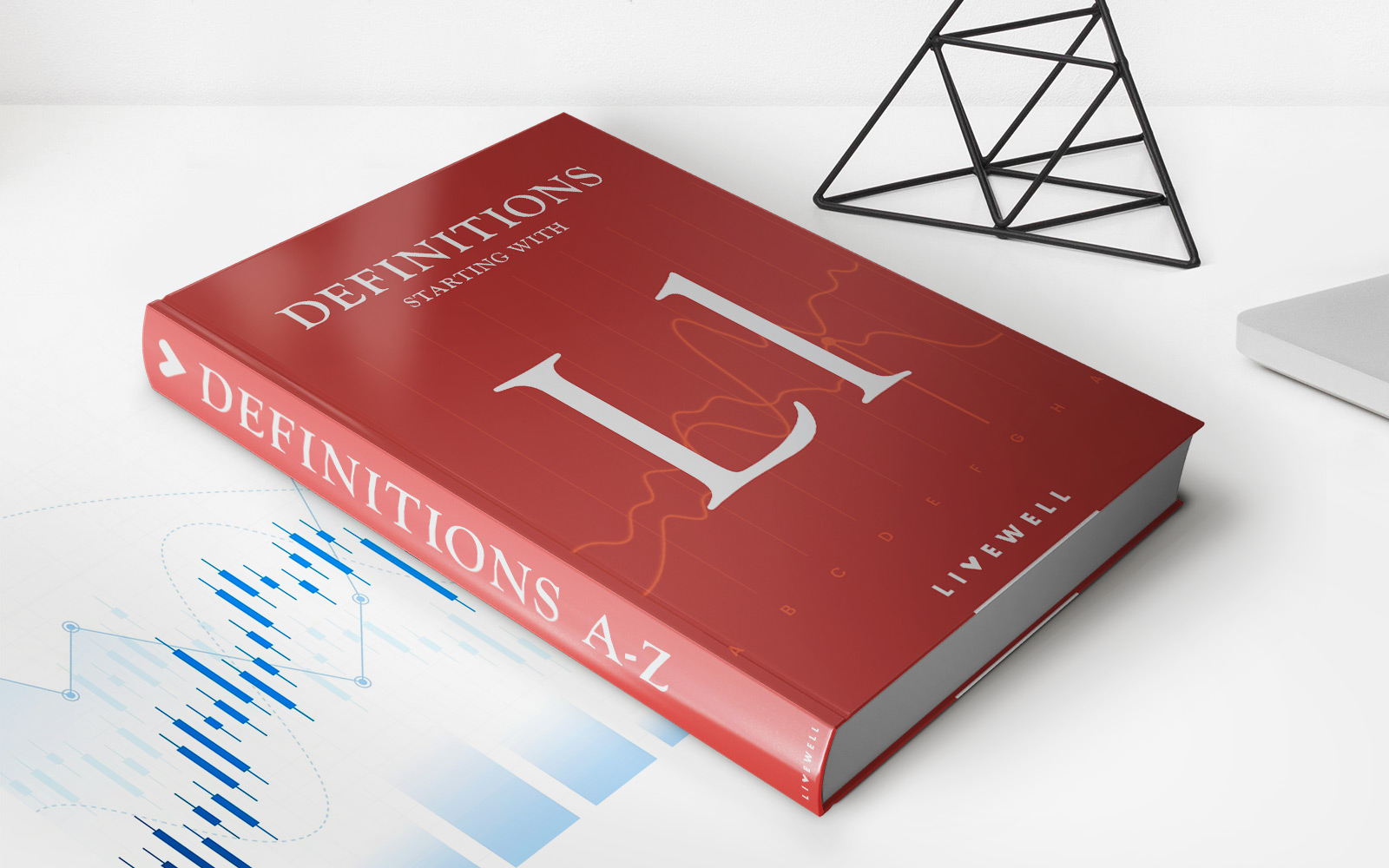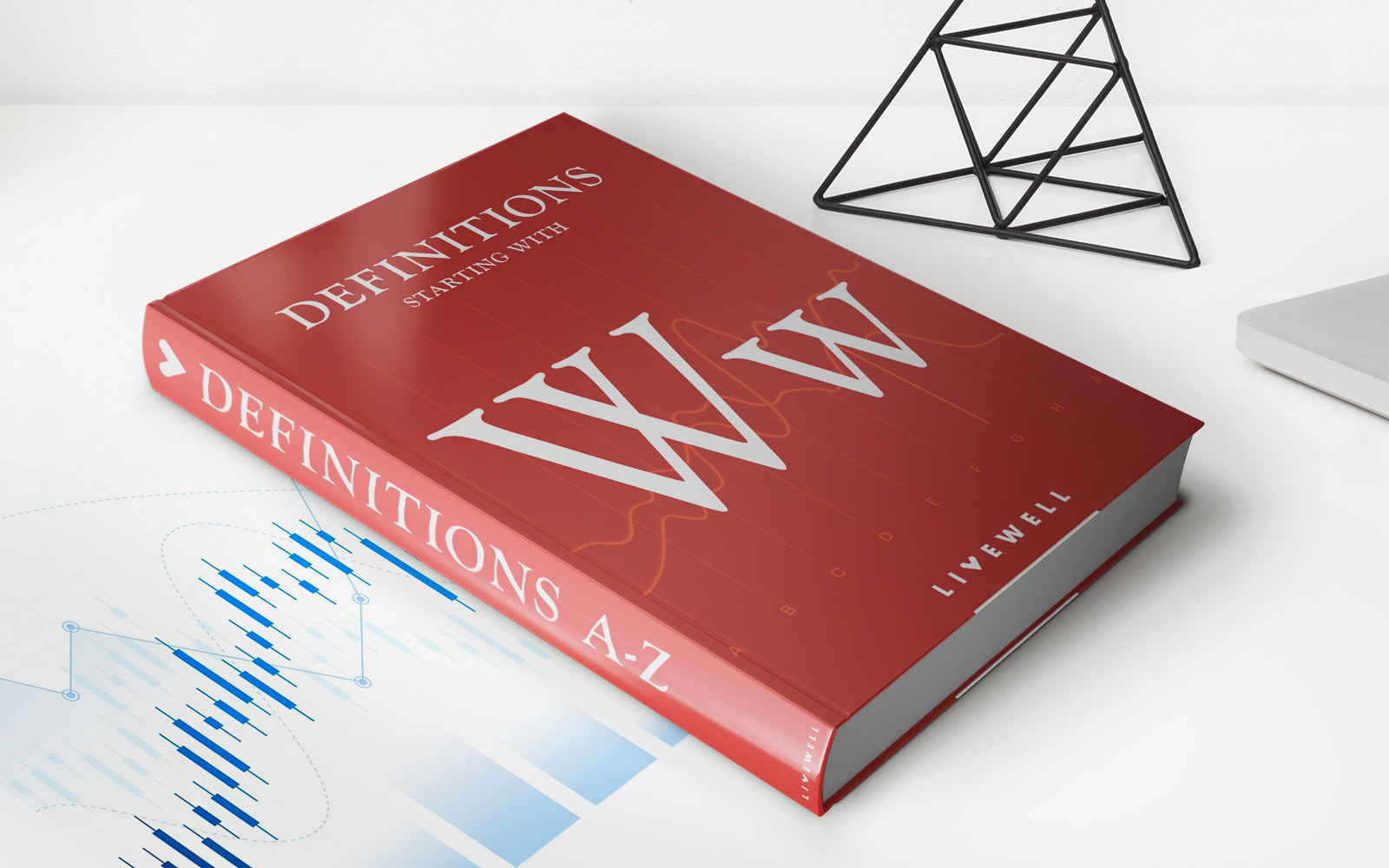

Finance
What Is Single Life Annuity Pension
Modified: December 30, 2023
Learn about single life annuity pension and how it can help you secure your financial future. Explore the benefits of this finance option and start planning for a comfortable retirement.
(Many of the links in this article redirect to a specific reviewed product. Your purchase of these products through affiliate links helps to generate commission for LiveWell, at no extra cost. Learn more)
Table of Contents
Introduction
Welcome to the world of retirement planning! As you start thinking about your future and how you’ll sustain your standard of living after you stop working, one important consideration is the type of pension plan you choose. One option that may be available to you is a single life annuity pension.
A single life annuity pension is a type of pension plan that provides a stream of income for the rest of your life after you retire. It is designed to ensure that you have a consistent and reliable source of income, freeing you from financial stress and allowing you to enjoy your retirement years with peace of mind.
Unlike other types of pensions, such as joint and survivor annuity pensions that provide ongoing benefits to a spouse or beneficiary after the plan holder’s death, a single life annuity pension only provides income for the plan holder. This means that once you pass away, the payments cease, and there are typically no remaining benefits for any surviving spouse or beneficiaries.
In this article, we will delve into the nuances of single life annuity pensions, exploring how they work, their pros and cons, factors to consider when choosing this option, and how they compare to other pension options. We will also provide real-life case studies to help illustrate the decision-making process. So, let’s dive in and explore the world of single life annuity pensions!
Definition of Single Life Annuity Pension
A single life annuity pension is a retirement plan that provides a fixed and regular income to an individual retiree for the remainder of their life. It is a type of annuity, which is essentially a contract between the individual and an insurance company.
When you choose a single life annuity pension, you exchange a lump sum or regular contributions during your working years for a guaranteed income stream during retirement. The amount of income you receive is determined by several factors, including your age, the amount of money accumulated in your pension fund, and prevailing interest rates at the time you start receiving payments.
One important characteristic of a single life annuity pension is that it provides income for the life of the plan holder only. This means that there are generally no provisions for continuation of payments to a beneficiary or surviving spouse after the plan holder’s death. If the plan holder passes away earlier than expected, there may be no remaining benefits or payments.
It’s important to note that single life annuity pensions are not suitable for everyone. They are typically favored by individuals who do not have dependents or have limited concern about leaving a financial legacy. If you have a spouse or dependents who rely on your income, you may want to consider other pension options, such as joint and survivor annuity pensions, which provide ongoing benefits to a surviving spouse or beneficiary after your death.
Now that we have a solid understanding of the definition of a single life annuity pension, let’s explore how this type of pension plan works in more detail.
How Single Life Annuity Pension Works
Understanding how a single life annuity pension works is essential to making an informed decision about your retirement planning. Let’s take a closer look at the mechanics of this pension option.
Firstly, when you choose a single life annuity pension, you will typically contribute a certain amount of money into your pension fund during your working years. This can be in the form of regular contributions or a lump sum payment. The money is then invested by the insurance company, aiming to generate returns and build a sufficient fund to provide you with income in retirement.
Once you reach the age of retirement, typically around 65, you can start receiving your pension payments. The exact amount you receive will depend on several factors, including the amount accumulated in your pension fund, prevailing interest rates, and your life expectancy. The insurance company uses actuarial calculations to determine the amount of income you can expect to receive each month.
It’s important to note that unlike other pension options, such as defined benefit plans, the income you receive from a single life annuity pension may not be fixed throughout your retirement. Some annuity contracts may offer the option of inflation protection, where your payments can increase to keep pace with inflation, although this may result in lower initial monthly payments.
Furthermore, the income from a single life annuity pension ceases upon your death. This means that if you were to pass away soon after starting your pension payments, there may be no remaining benefits or payments for your beneficiaries. However, some annuity contracts may include a guarantee period, where if you were to pass away within a certain period, your beneficiary will continue receiving payments for the remainder of that period.
It’s worth noting that the income from a single life annuity pension is generally taxable. The portion of each payment considered as a return of your original investment is tax-free, while the portion considered as interest or earnings is taxable as ordinary income.
Now that we have a clearer understanding of how a single life annuity pension works, let’s explore the pros and cons of this pension option.
Pros and Cons of Single Life Annuity Pension
Like any retirement planning option, a single life annuity pension has its own set of advantages and disadvantages. Let’s examine the pros and cons of choosing this type of pension plan.
Pros:
- Reliable income: A single life annuity pension provides a steady and predictable stream of income throughout your retirement. This can help ensure financial stability and peace of mind.
- No investment risk: Once you start receiving pension payments, you are no longer exposed to investment risks. The responsibility for managing your pension fund and generating returns lies with the insurance company.
- Potentially higher initial payments: Since a single life annuity pension does not include provisions for continuing payments to beneficiaries, the initial monthly payments are often higher compared to other pension options.
- Protection against longevity risk: One of the biggest concerns in retirement planning is the risk of outliving your savings. With a single life annuity pension, you are guaranteed income for the rest of your life, regardless of how long you live.
Cons:
- No benefit for beneficiaries: The main drawback of a single life annuity pension is that once you pass away, the pension payments cease, and there are typically no remaining benefits for any surviving spouse or beneficiaries.
- Inflexibility: Once you choose a single life annuity pension, it is challenging to make changes to the plan. You cannot access the lump sum amount or alter the payment terms once the pension payments have started.
- Loss of capital: When you choose a single life annuity pension, you essentially exchange your pension fund for a guaranteed income stream. This means you no longer have access to the lump sum amount or the ability to leave a financial legacy.
- Inflation risk: Unless your annuity contract includes inflation protection, the purchasing power of your pension payments may erode over time due to inflation.
Ultimately, the decision to choose a single life annuity pension depends on your individual circumstances and preferences. Consider your financial goals, the presence of dependents, and your risk tolerance before making a decision.
Next, let’s explore the factors to consider when choosing a single life annuity pension.
Factors to Consider When Choosing Single Life Annuity Pension
Choosing a single life annuity pension is an important decision that requires careful consideration. To make an informed choice, it’s crucial to evaluate several factors that can impact the suitability of this pension option for your specific needs and circumstances. Let’s explore these factors:
Age and Life Expectancy:
Your age and life expectancy play a significant role in determining the viability of a single life annuity pension. Generally, the older you are, the higher your monthly payments will be, as the insurance company anticipates a shorter payment period. Consider your current age and your projected life expectancy to gauge whether a single life annuity pension aligns with your retirement goals.
Health and Longevity:
Health factors and longevity considerations should also be taken into account. If you have common chronic health conditions or a family history of shorter life spans, a single life annuity pension may be more suitable. However, if you have exceptional health or a family history of longevity, you may want to explore other pension options that provide ongoing benefits to beneficiaries.
Financial Needs and Goals:
Assess your financial needs and goals for retirement. Consider whether a guaranteed income for the rest of your life is the top priority, or if you have other financial objectives, such as leaving a legacy or having flexibility with your pension funds. Depending on your specific goals, a single life annuity pension may or may not align with your desired financial outcomes.
Risk Tolerance:
Evaluate your risk tolerance. If you are risk-averse and value the stability of a fixed income stream, a single life annuity pension can provide peace of mind. However, if you have a higher risk tolerance and prefer more control over your investments, other pension options that offer investment flexibility may be more suitable.
Other Sources of Income:
Consider your other sources of income in retirement, such as Social Security benefits or other pension plans. If you have sufficient alternative income streams to cover your basic expenses, a single life annuity pension can be a complementary source of income. However, if you rely heavily on a single life annuity pension as your sole income source, ensure it will adequately meet your financial obligations.
Estate Planning:
If leaving a legacy or providing for beneficiaries is important to you, a single life annuity pension may not be the best option. Consider whether your estate planning priorities align with the limitations of a single life annuity pension, which typically ends payments upon your death.
By considering these factors, you can make a more informed decision about whether a single life annuity pension is the right option for your retirement needs. Next, let’s compare single life annuity pension with other available pension options.
Comparison with other Pension Options
When it comes to planning for retirement, it’s essential to consider and compare different pension options to determine which one aligns best with your financial goals and circumstances. Let’s compare a single life annuity pension with other available pension options:
Joint and Survivor Annuity:
Unlike a single life annuity pension, a joint and survivor annuity provides ongoing benefits to a surviving spouse or beneficiary after the plan holder’s death. While this option provides financial security for your loved ones, it typically results in lower monthly payments than a single life annuity pension. If you have a spouse or dependents who rely on your income or if leaving a legacy is a priority, a joint and survivor annuity may be more suitable for your needs.
Defined Benefit Pension:
A defined benefit pension is a traditional employer-sponsored pension plan that guarantees a specific benefit amount upon retirement, usually based on salary and years of service. With a defined benefit pension, you do not have to make investment decisions, as the employer is responsible for managing the pension fund. Unlike a single life annuity pension, a defined benefit pension usually provides ongoing benefits to a surviving spouse or beneficiaries. However, these plans are becoming less common in the private sector.
Defined Contribution Pension (401(k) or IRA):
Defined contribution plans, such as 401(k) or individual retirement accounts (IRA), differ significantly from a single life annuity pension. These plans allow you to contribute a portion of your income, often with employer matching, into investment accounts. The funds in these accounts grow tax-deferred until retirement, and you have more control over investment choices. Upon retirement, you can choose how to withdraw the funds, either as a lump sum, periodic payments, or by purchasing an annuity. Defined contribution plans offer flexibility and control over your investments, but they also expose you to market risks and require ongoing management.
Self-Invested Personal Pension (SIPP):
A self-invested personal pension (SIPP) is a type of individual pension plan that allows you to make your own investment decisions within a tax-advantaged account. SIPPs offer flexibility and control over investments, similar to defined contribution plans. However, the responsibility of managing the investments and creating a retirement income stream lies with you. A SIPP provides the opportunity for potentially higher returns but also carries market risks and requires active management.
It’s important to consider your financial goals, risk tolerance, and the presence of dependents when comparing different pension options. Assessing your priorities and understanding the nuances of each option will guide you in choosing the pension plan that best suits your retirement needs.
Now, let’s explore real-life case studies to further illustrate the decision-making process of choosing a single life annuity pension.
Case Studies of Single Life Annuity Pension
To better understand the real-world application of a single life annuity pension, let’s take a look at a couple of case studies:
Case Study 1: Jane
Jane is a 65-year-old retiree who is in good health and has no dependents. She has accumulated a significant amount in her pension fund and is looking for a steady income stream during her retirement years. After carefully considering her options, Jane decides to choose a single life annuity pension. The guaranteed income from the annuity will provide her financial stability and allow her to enjoy her retirement without worrying about market fluctuations or outliving her savings.
Case Study 2: John and Sarah
John and Sarah are a married couple approaching retirement. Both are in good health and anticipate a long retirement ahead. They want to ensure that their income stream continues for the surviving spouse after either one passes away. After considering various options, including a joint and survivor annuity and a single life annuity pension, they decide to opt for a joint and survivor annuity. This ensures that the surviving spouse, in this case, Sarah, will continue to receive a portion of the pension payments after John’s death, providing her with financial security in the event of his passing.
These case studies highlight the importance of considering individual circumstances and priorities when choosing a pension plan. While a single life annuity pension was suitable for Jane, it may not have been the best fit for John and Sarah.
It’s crucial to carefully evaluate factors such as age, health, financial goals, risk tolerance, and the presence of dependents or beneficiaries when making pension plan decisions. By doing so, individuals can select the option that aligns with their specific needs and objectives.
Now that we’ve explored the case studies, let’s wrap up our discussion on single life annuity pensions.
Conclusion
Choosing the right pension plan is a critical decision that can greatly impact your financial well-being during retirement. A single life annuity pension offers a reliable and steady income stream for the rest of your life, ensuring financial stability and peace of mind. However, it is important to carefully consider the pros and cons, as well as other available pension options, before making a decision.
While a single life annuity pension provides a guaranteed income and protects against longevity risk, it may not be suitable for individuals with dependents or those who wish to leave a financial legacy. Other pension options, such as joint and survivor annuities, defined benefit plans, 401(k)s, and SIPPs, offer different features and benefits that may align better with your specific circumstances and goals.
Factors like your age, health, financial needs, risk tolerance, and the presence of dependents should guide your decision-making process. By assessing these factors, you can determine whether a single life annuity pension is the right choice for your retirement plan.
In conclusion, a single life annuity pension can provide a reliable and stable income stream for individuals without dependents or those who prioritize personal financial security over leaving a financial legacy. It offers a sense of financial stability and protects against outliving your savings. However, it is important to evaluate your unique circumstances and compare different pension options to ensure you choose the plan that best supports your long-term financial goals and objectives.
Remember, retirement planning is a complex process, and seeking advice from financial professionals can provide valuable insights tailored to your specific needs. With careful consideration and informed decision-making, you can confidently navigate the world of pension planning and enjoy a financially secure retirement.














